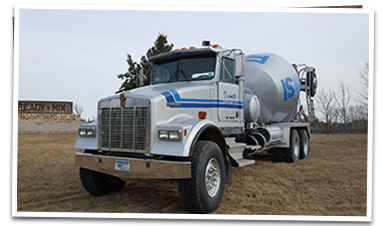
Pervious concrete, utilized in a penetrable clearing, contains an organization of openings or voids, to permit air or water to travel through the substantial
This permits water to deplete normally through it, and can both eliminate the typical surface-water waste foundation, and permit renewal of groundwater when ordinary cement ready mix concrete derby .
It is framed by leaving out some or the entirety of the fine total (fines). The leftover enormous total then, at that point, is limited just barely to Portland concrete. At the point when set, normally somewhere in the range of 15% and 25% of the substantial volume is voided, permitting water to deplete at around 5 lady/ft2/min (70 L/m2/min) through the substantial.
Establishment
Pervious cement is introduced by being filled structures, then, at that point, screeded off, to even out (not smooth) the surface, then, at that point, pressed or packed into place. Because of the low water content and air penetrability, inside 5-15 minutes of packing, the substance should be covered with a 6-mil poly plastic, or it will dry out rashly and not appropriately hydrate and fix.
Attributes
Pervious cement can essentially diminish commotion, by permitting air to be pressed between vehicle tires and the street to get away. This item can’t be utilized on major U.S. public expressways presently because of the great psi evaluations expected by most states. Pervious cement has been tried up to 4500 psi up until this point.
Cell concrete
Circulated air through concrete created by the expansion of an air-entraining specialist to the substantial (or a lightweight total, for example, extended dirt total or plug granules and vermiculite) is in some cases called cell concrete, lightweight circulated air through concrete, variable thickness concrete, Froth Concrete and lightweight or super lightweight concrete, in no way related to circulated air through autoclaved concrete, which is fabricated off-site utilizing a completely unique strategy.
In the 1977 work An Example Language: Towns, Structures and Development, planner Christopher Alexander wrote in design 209 on Great Materials:
- Customary cement is excessively thick. It is weighty and difficult to work. After it sets one can’t cut into it or nail into it. Also, its surface is appalling, cold, and hard in feeling except if covered by costly completions not fundamental to the construction.
- But then concrete, in some structures, is a captivating material. It is an area of strength for liquid, generally modest. It is accessible in pretty much all aspects of the world. A College of California teacher of designing sciences, P. Kumar Mehta, has even as of late tracked down an approach to changing over deserted rice husks into Portland concrete.
Is there an approach to consolidating this multitude of good characteristics of cement and furthermore having a material that is light in weight, simple to work, and with a charming completion? There is. It is feasible to utilize an entire scope of super lightweight cement which has a thickness and compressive strength basically the same as that of wood. They are not difficult to work with, can be nailed with normal nails, cut with a saw, bored with carpentry devices, and handily fixed.
We accept that super lightweight cement is one of the key mass materials representing things to come.
The variable thickness is typically portrayed in kg per m3, whereas ordinary cement is 2400 kg/m3. Variable thickness can be essentially as low as 300 kg/m3, in spite of the fact that at this thickness it would have no underlying uprightness by any stretch of the imagination and would work as a filler or protection utilize as it were. The variable thickness decreases solidarity to increment warm and acoustical protection by supplanting the thick weighty cement with air or a light material like mud, plug granules and vermiculite. There are many contending items that utilize a frothing specialist that looks like shaving cream to blend air rises in with the substantial. All achieve a similar result: to dislodge concrete with air.

